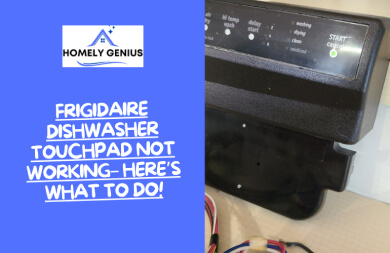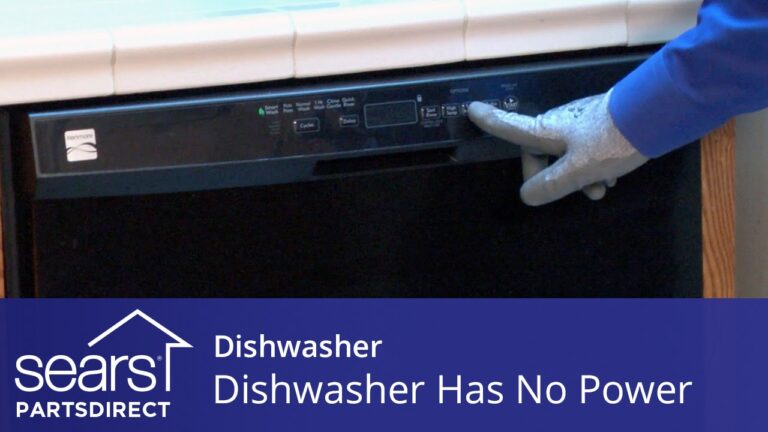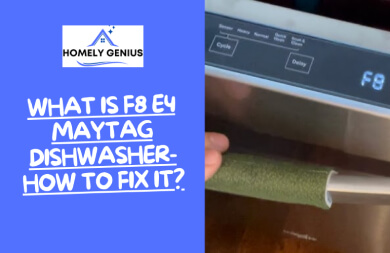Kitchenaid Dishwasher Not Cleaning- Why and How to Fix?

Kitchenaid has been proudly meeting people’s culinary goals for a long time. Their dishwasher is one of their best kitchen appliances. But over time, it may run into issues like not cleaning. As a user, you need to find the main reason and solve it.
The most common reasons for kitchenaid dishwashers not cleaning include insufficient water pressure, a low water temperature, incorrect amounts of detergent, old detergent, or improper loading. In addition, clogs in filters and spray arms can obstruct water flow, leading to an improper cleaning issue.
These are the main reasons. You need to keep reading to find the solutions!
Troubleshooting and fixing for Kitchenaid Dishwasher Not Cleaning
So there are a handful of reasons why your dishwasher is not cleaning properly.
We suggest you start the troubleshooting process by checking things like correctly loading all the items or ensuring adequate water supply to the dishwasher.
In fact, most of the troubleshooting steps involve checking things that are easy to solve.
So, follow the below discussion, fix everything in your way that you see is not okay, and get the dishwasher back to its working order.
1. Ensure adequate water supply to the dishwasher
Your first basic step is to check if the water supply to the dishwasher is turned on. It’s easy to make this mistake. So before anything else, ensure water supply to the dishwasher.
Anyway, if you have already turned it on, the next thing you might want to check is the water pressure.
If the water pressure is less than the ideal limit, hard spots will remain clinging to the dish. Check your user manual for the ideal water pressure limit and adjust it accordingly.
If the pressure is fine, the next thing to check is the water temperature, which is a very crucial aspect in dissolving and removing the tough spot. It should be within the ideal range, typically around 120°F (49°C).
2. Incorrectly Loading the Items in the Dishwasher
When your kitchen aid dishwasher is not cleaning, incorrect loading is an aspect of which you need to be careful. If you improperly load items, then there is a chance that water won’t reach inside or hit hard spots properly.
In addition, make sure that the item does not block the spray arms or the detergent dispenser when the door is closed. In addition to these two, here are some guidelines from the manufacturer that you must follow.
- Be careful about any plastic items due to their porous surfaces, which may collect water droplets. Make sure to arrange them at the proper angle.
- Place bowls and cups in the upper rack of the dishwasher.
- But you must use the lower rack for flat items like plates, cups, and utensils.
- When loading the cup, try moving it downward to prevent water from accumulating in the base.
- Usually, for plastic items, it takes time to dry. You can air dry after a regular dishwasher cycle.
3. Incorrect amount of Detergent
This is another simple reason why the KitchenAid dishwasher is not cleaning dishes properly. So, what you can do is check if you put in an adequate amount of detergent.
For effective cleaning, the ideal amount should be 1 tablespoon (15 grams) per load. You can use more only if you see the soil and water hardness levels are too high.
3. Old Detergent
Old detergent loses its potential to clean the dishes properly. Also, if the detergent is not kept in a cool and dry place and is exposed to air for a longer time, it loses its potential.
This is because, over time, it absorbs moisture from the air and clumps together.
So it does not dissolve properly in the dishwasher wash cycle, leading to uneven distribution and reduced cleaning performance.
Effective management of detergent plays a crucial role here. keep it in a proper place, and check the expiration date on the detergent packaging.
4. Incorrect Cycle Selection
Consider whether the correct cycle and water temperature are used for optimum dishwasher performance.
The cycle that you select must match your load, and KitchenAid is designed for varying levels of soiling and dish types.
For example, if your dishes have heavy food remains or tough spot, use a heavier cycle.
5. Clogged Pump and Spray Arm
The pump’s filter and the spray arm play a crucial role in effective cleaning. If your KitchenAid dishwasher is not cleaning properly, you probably want to check these two crucial components.
Over time, these components may become clogged, which in turn disrupts the cleaning process.
So check the pump filter for any debris or bad objects that may be causing a clog. Also check the spray arm to ensure proper distribution of water.
KitchenAid Dishwasher Maintenance Tips and Usage Guidelines
If you take good care of your KitchenAid dishwasher, it will surely give you effective cleaning for a long period of time. Here are some maintenance and usage guidelines that you can follow:
- You must not take enough time to clean it properly to prevent the buildup of food residues.
- If not every month, at least every three months, inspect and clean the dishwasher’s filters and drains to prevent clogs
- When loading lightweight items like plastic containers or lids, ensure they are securely positioned in the rack
- When placing items like pot lids, handles, and large items like pizza pans, make sure they do not touch the dishwasher’s sides or interfere with the spray arm’s rotation.
- Some cleaners produce excessive foaming that is not suitable for stainless steel. So use recommended cleaner.
- For your safety,avoid cleaning the dishwasher interior immediately after a wash cycle.
FAQ
Hopefully, you came up with the idea of why your dishwasher is not cleaning effectively and what you can do. Still, you might have some questions. Here are some frequently asked questions related to discussion that you might want to know.
How long does a KitchenAid dishwasher take to wash dishes?
The duration of a KitchenAid dishwasher cycle typically falls within the range of 1.5 to 4 hours. However, since the kitchen offers various cycle options, the cycle you select will impact the overall time it takes to complete the wash.
How do you know when a KitchenAid dishwasher is done?
Check the clean light, which illuminates at the end. The most obvious sign is to notice a chimp or beep sound at the end. These sounds are meant to alert you that the cycle has finished. Also, if KitchenAid has a digital display, it will show the end cycle sign.
Where are KitchenAid dishwashers made?
KitchenAid dishwashers are manufactured in Findlay, Ohio, USA. The KitchenAid brand is owned by the Whirlpool Corporation.
Final Words
So that’s all, and you’ve probably found the root cause behind the issue and solved it. If nothing really works, we suggest getting help from a mechanic, he will asses better and let you know what you have to do.
Anyway, if you carry out the diagnosis all by yourself, follow the safety rules from the manual.






